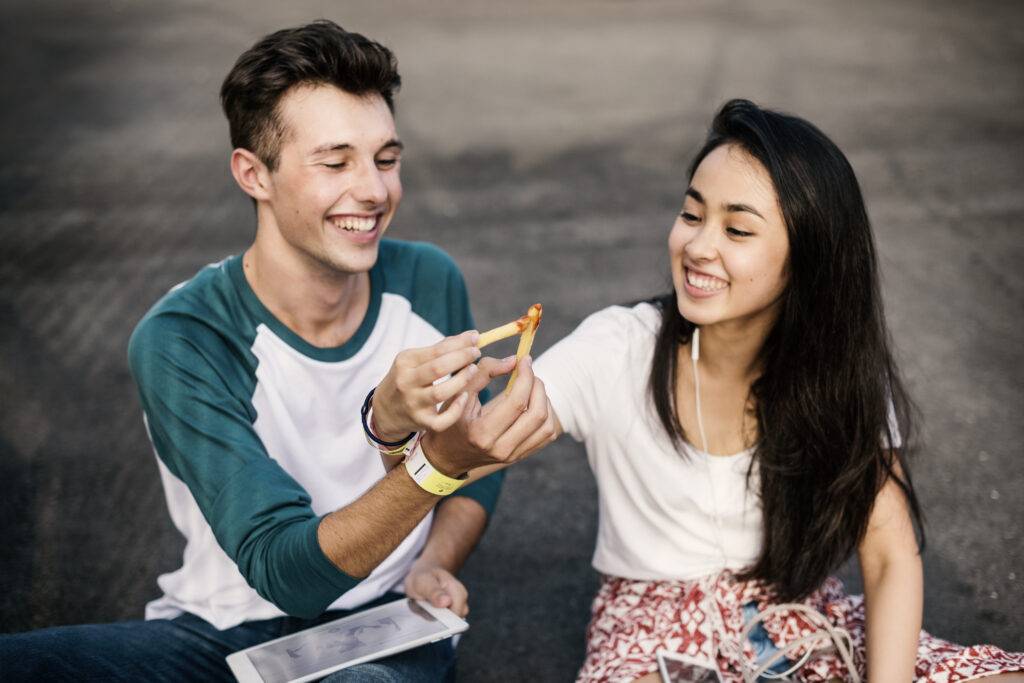Dating is an essential aspect of human interaction, and every culture approaches it differently. In the Philippines, dating is more than just a romantic pursuit; it’s a reflection of the country’s rich traditions and values. Filipino dating culture is unique and deeply rooted in their history, making it a fascinating subject to explore. In this article, we’ll delve into the various aspects of Filipino dating, including the role of family, courtship practices, and the influence of modern technology on this traditional way of finding love.
1. Family-Centered Approach
In Filipino culture, family holds immense importance, and this principle extends to the realm of dating. Unlike Western dating practices, where individuals often prioritize personal desires, Filipino dating involves the whole family. When a Filipino individual is interested in someone, they must seek the approval and blessing of their family before proceeding further. Family members play a significant role in the decision-making process, and their acceptance is vital for a relationship to flourish.
2. Harana: The Art of Serenading
One of the most charming Filipino courtship traditions is “Harana,” where a suitor serenades the person they’re interested in. This time-honored practice involves singing heartfelt love songs accompanied by a guitar or other musical instruments outside the window of the intended partner. Although modern dating practices have evolved, Harana remains a cherished cultural expression of love and admiration.
3. Ligaw: The Traditional Courtship
In the Philippines, the process of courtship is called “Ligaw.” It is a delightful and intricate dance of wooing and winning the heart of a potential partner. Ligaw emphasizes respect, patience, and genuine intentions. During this period, couples get to know each other, spend time with each other’s families, and engage in meaningful conversations to build a strong foundation for their relationship.
4. The Role of Pamanhikan
Once a Filipino couple decides to take their relationship to the next level, the formal introduction of families takes place in a tradition known as “Pamanhikan.” This gathering allows both families to discuss the wedding plans, financial matters, and other important aspects of the marriage. Pamanhikan is a beautiful testament to the importance of family in Filipino culture and reinforces the idea of unity and support.
5. The Influence of Technology
In recent years, technology has significantly impacted Filipino dating culture. With the rise of social media and dating apps, many Filipinos now use digital platforms to meet potential partners. While this modern approach offers more opportunities to connect with others, it also poses challenges in maintaining the traditional values of Filipino dating. Striking a balance between the two worlds has become essential for individuals seeking love in the digital age.
6. The Significance of Respect
Respect is a core value in Filipino dating culture. Whether it’s the respect for elders, personal boundaries, or differing opinions, showing respect is crucial in every stage of the relationship. This emphasis on respect fosters a healthy and nurturing environment for love to grow and flourish.
7. Importance of Commitment
Filipino dating culture emphasizes long-term commitment and dedication. Marriage is viewed as a sacred institution, and the idea of sticking together through thick and thin is deeply ingrained in the Filipino mindset. The value placed on commitment ensures that relationships are built on a strong foundation, promoting stability and lasting love.

8. Modern Challenges and Solutions
While Filipino dating culture is rich in traditions, it also faces challenges in the modern era. The fast-paced lifestyle, cultural influences from other countries, and changing social dynamics have all contributed to shifts in dating norms. However, Filipinos are adept at adapting to change while preserving their heritage. Balancing tradition with modernity allows them to navigate the complexities of dating in today’s world successfully.
9. Navigating Cross-Cultural Relationships
In an increasingly globalized world, cross-cultural relationships have become more common. Filipino dating culture embraces diversity and welcomes individuals from different backgrounds. Navigating the intricacies of a cross-cultural relationship requires open communication, understanding, and mutual respect for each other’s traditions and beliefs.
10. The Language of Love
Love, like any language, has its own dialects in Filipino dating culture. Expressing affection through “kilig” (butterflies in the stomach) or “ligawan” (courting) terminologies adds an endearing aspect to romantic interactions. Understanding these nuances enhances the dating experience and fosters a deeper connection between partners.
Conclusion
Filipino dating culture is a beautiful tapestry of traditions, values, and modern influences. Rooted in family-centeredness, respect, and commitment, it showcases a unique approach to finding love. As the world evolves, Filipino dating culture embraces change while preserving its essence. In a society that cherishes its heritage and adapts to the future, love remains a timeless and cherished aspect of Filipino life.
Last but not least, Filipino dating culture, with its unique blend of tradition and modernity, fosters a sense of unity and commitment. The emphasis on respect, family involvement, and the art of courtship sets it apart from Western dating practices. As technology infiltrates the dating scene, Filipinos adapt to maintain their cherished values. Cross-cultural relationships are celebrated, as love knows no boundaries in this diverse society. Love in Filipino culture has its own language, evoking feelings of “kilig” and “ligawan,” making romantic interactions even more enchanting. With an enduring focus on long-term commitment and a willingness to embrace change, Filipino dating culture continues to thrive as a symbol of love, devotion, and cultural pride.
FAQs
- Question: Are Filipino families really involved in dating decisions? Answer: Yes, family approval is essential in Filipino dating culture. Individuals seek the blessing of their families before pursuing a relationship.
- Question: Is the tradition of “Harana” still prevalent today? Answer: While not as common as before, “Harana” is still practiced in some rural areas and among individuals who wish to uphold this beautiful tradition.
- Question: How long does the courtship period usually last? Answer: The duration of the courtship period varies from couple to couple. It can last from several months to years, depending on various factors.
- Question: Do Filipinos prefer dating apps over traditional methods? Answer: Many Filipinos use dating apps to meet potential partners, but traditional methods like “Ligaw” are still cherished and valued by those who appreciate their cultural significance.
- Question: Is Filipino dating culture accepting of LGBTQ+ relationships? Answer: Filipino society is becoming more accepting and open-minded towards LGBTQ+ relationships, although challenges may still exist, particularly in more conservative areas.



